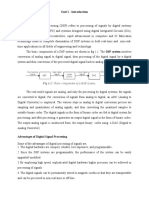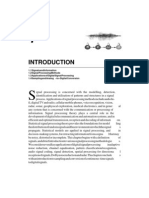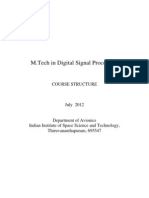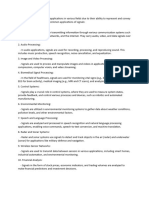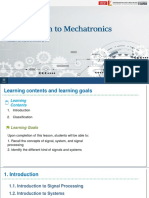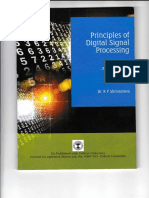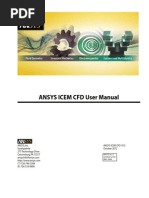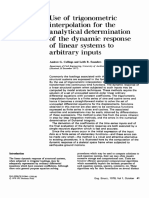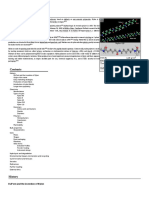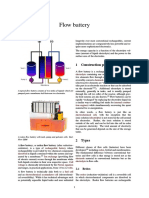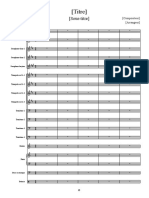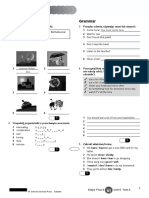0% found this document useful (0 votes)
141 views4 pagesComprehensive Guide to Signal Processing
Signal processing is an enabling technology that encompasses the fundamental theory, applications, algorithms, and implementations of processing or transferring information contained in many different physical, symbolic, or abstract formats broadly designated as signals. It uses mathematical, statistical, computational, heuristic, and linguistic representations, formalisms, and techniques for representation, modelling, analysis, synthesis, discovery, recovery, sensing, acquisition, extraction, learning, security, or forensics. Signal processing is applied in many fields including audio, speech, image, video, wireless communication, control systems, seismology, and financial analysis. There are three main categories of signal processing: analog signal processing, continuous-time signal processing, and discrete-time signal processing.
Uploaded by
christopheCopyright
© © All Rights Reserved
We take content rights seriously. If you suspect this is your content, claim it here.
Available Formats
Download as PDF, TXT or read online on Scribd
0% found this document useful (0 votes)
141 views4 pagesComprehensive Guide to Signal Processing
Signal processing is an enabling technology that encompasses the fundamental theory, applications, algorithms, and implementations of processing or transferring information contained in many different physical, symbolic, or abstract formats broadly designated as signals. It uses mathematical, statistical, computational, heuristic, and linguistic representations, formalisms, and techniques for representation, modelling, analysis, synthesis, discovery, recovery, sensing, acquisition, extraction, learning, security, or forensics. Signal processing is applied in many fields including audio, speech, image, video, wireless communication, control systems, seismology, and financial analysis. There are three main categories of signal processing: analog signal processing, continuous-time signal processing, and discrete-time signal processing.
Uploaded by
christopheCopyright
© © All Rights Reserved
We take content rights seriously. If you suspect this is your content, claim it here.
Available Formats
Download as PDF, TXT or read online on Scribd
/ 4


























